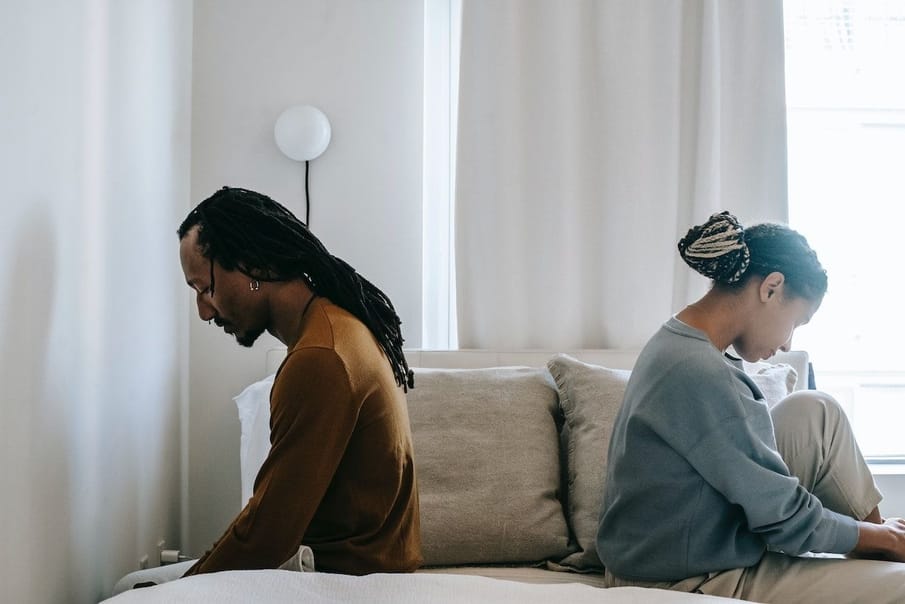What is the role of boundaries in relationships, and how do we know if they're healthy or not?
With the rise of mental health awareness and more people seeking therapy, we’re seeing certain terms come up again and again in the media. One term being debated at the moment is ‘boundaries’ and, specifically, boundaries in relationships.
Boundaries have been heralded as things we should all have; a way of protecting our wellbeing and communicating our needs to others. While this is true, there is a danger of people using the term boundaries to excuse manipulative behaviour. So, what exactly are boundaries in a relationship, and how do we know if the boundaries being set are healthy or not?
What are boundaries in a relationship?
Boundaries can be seen as drawing a line in the sand, helping you decipher what you’re comfortable with, and what you’re not comfortable with. In relationships, they help us do this in the context of who we’re spending time with.
“Boundaries are those invisible lines that determine what is ok for us and what is not ok in relationships.” explains counsellor Julia Summers.
“Boundaries are determined by our personal experience, society and our culture. Some boundaries are obvious norms and others are very personal determined by our own experience. They are there to keep us feeling safe in our world and our relationships, however, people can push and break those boundaries and so can we.”
As Julia notes here, while boundaries in relationships involve other people, they are really about your relationship with yourself. We create them based on our own experiences and values.
Discussing the topic of boundaries in the article Setting boundaries in relationships, counsellor Gregori Savva highlights how boundaries act as limits and points of contact.
“Boundaries are both the limits and points of contact in relationships. They are limits in as much as they define a mutual agreement about what is acceptable, and what isn’t in relationships.
“It’s about finding a balance between what we feel comfortable with and not going beyond the limits of our tolerance. Maintaining this balance is difficult when there are competing interests and we risk losing mutual trust and respect. For example, most people agree not to intrude on each other’s space; not to control one another or act out in violence.”
This point on finding balance is an important one, and something that can help here is establishing your boundaries early.
“It is really important to know what your own boundaries are before you enter into relationships otherwise your relationship can become unhealthy or unbalanced,” Julia says.
Having your own boundaries clear in your mind can help you set them with intention in your relationship and ensure you’re on the same page. Of course, we all change a grow within relationships, so our boundaries may shift and so might our partners. What’s important here is recognising which boundaries are healthy, and which aren’t.
Emotional abuse (also known as psychological abuse) is a type of abuse where someone tries to use emotions to manipulate, embarrass, shame, blame, criticise, or otherwise try and gain control and power over someone else. Counselling Directory member and counsellor Leigh Taylor explains more about emotional abuse, and how therapy can help.
What’s the difference between healthy and unhealthy boundaries in relationships?
Healthy boundaries are a way of protecting and respecting ourselves, whereas unhealthy boundaries often look to control others and can come from a source of fear, insecurity or jealousy.
“Someone could ask or demand to set a completely inappropriate boundary and this could cross over into an attempt at coercive control or manipulation. This is a separate matter of trying to change someone and can be a sign of an unhealthy relationship.” Julia explains.
An example of a healthy boundary may be that you want to spend time with your friends outside of your relationship as it’s important for you to maintain independence and have multiple connections. If your partner responds by saying they don’t want you speaking to friends because it makes them jealous – this is an example of an unhealthy boundary they’re setting.
A hallmark of healthy boundaries is that they help us maintain a sense of safety while respecting each other’s differences. The following quote from Gregori’s article sums it up well.
“Boundaries are not restrictions on our independence; they are freedoms that come with individual and mutual responsibility.
“In intimate relationships, we all need to feel safe. So we build bonds of attachment based on mutual respect and trust. And we establish boundaries to ensure while we share common values; we also appreciate each other’s individuality and freedom of choice.”
Unhealthy boundaries can be used when someone has a desire for control in a relationship. They may employ rigid boundaries as a form of manipulation or even coercive control. Fear of rejection and deep-rooted insecurity can drive someone to set unhealthy boundaries, along with a lack of experience in setting limitations.
Recognising the difference between a healthy and an unhealthy boundary can also be done by, surprise surprise, checking in with our own boundaries.
“We discern whether someone else’s boundary is appropriate and healthy for us based on our personal boundaries. For example, if someone has a problem with drinking alcohol they may ask their partner to not drink around them if that is the support they need. If the other person feels this is reasonable to them then that is OK. If it is not reasonable to them, they choose to say no and decide how they want to progress things.”
Recognising the nuances within the term ‘boundary’ and truly understanding what it means can go a long way in supporting your wellbeing and relationships. If this is something you’re keen to explore further, working with a professional counsellor can help you delve into what’s right for you and the true meaning of healthy boundaries.


Comments